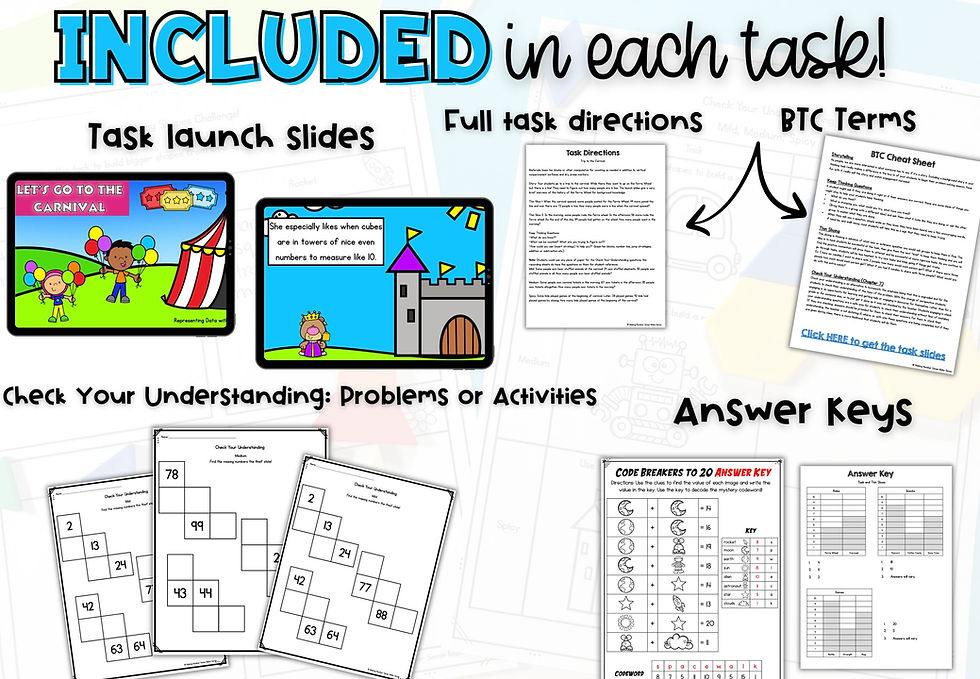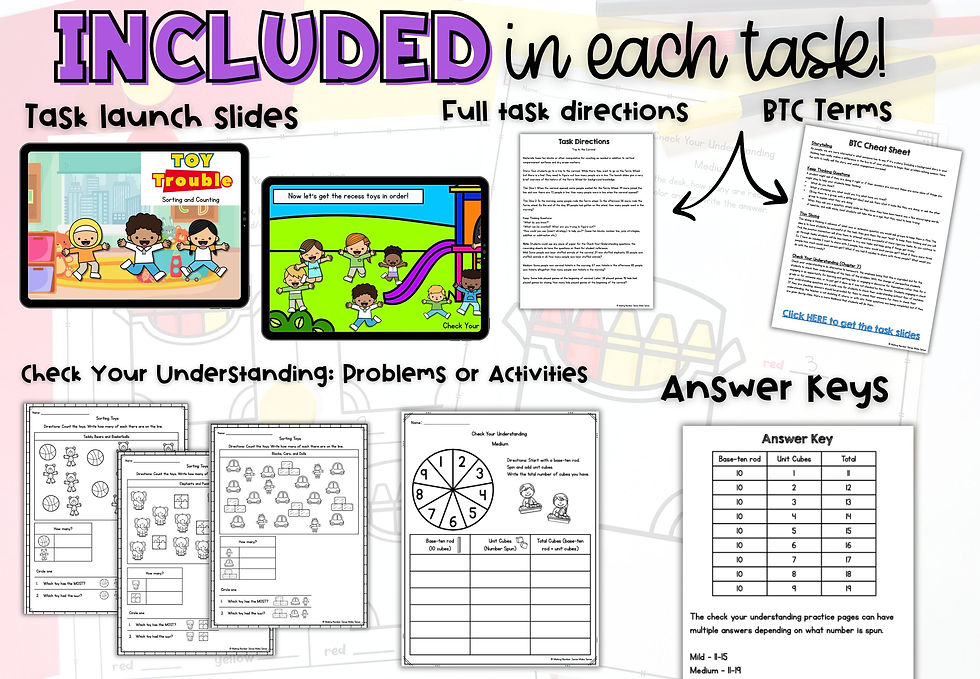What is Subitizing and Why is it Important?
- Lara

- May 15, 2023
- 3 min read
Updated: Aug 11, 2023

What is subitizing?
Subitizing, also sometimes spelled “subitising,” is the ability to instantly recognize a number of objects without counting them. Some students may already be subitizing small numbers if they are familiar with dice, or play dice games at home, and knowing finger patterns to 5. If students can say the number of items quickly they are subitizing vs counting the objects and then saying the number.
There are two types of subitizing, perceptual and conceptual. We can only really subitize numbers to around 5 easily which is perceptual subitizing. Conceptual subitizing is when we start to see the small numbers inside of bigger ones and relate them to each other. For example, if you are looking at six on a die, you may see three and three, or 2 groups of two.

Why is subitizing important?
Subitizing on its face may seem like a skill that students might only need in isolation, but that is not the case at all! It helps students develop sophisticated counting strategies beyond counting by ones and helps students relate numbers to one another or compose and decompose numbers. For example, they will start to learn that 5 is the same 3 and 2, 4 and 1, 5 and 0 etc. supporting their understanding of beginning addition and subtraction concepts.

Subitizing Activities and Games in the Classroom
Subitizing can be used throughout your math block as a warm-up, during math centers by using dice, ten frames, or rekenreks, or as a closing activity or quick check to finish your math block.
Quick Images
You can get some ideas on how to use quick images post or how to use quick images video. The idea is that you flash an arrangement of items for 3 to 5 seconds tops so that students don't have a chance to count one by one and they have to tell you how many they saw and what it looked like to them. If you showed 7 on a ten frame, they might say they saw 5 on top and 2 on the bottom, and they new it was 7 because 5 and 2 is seven, or saw three empty spaces so 10 take away 3 is 7 etc. There are lots of versions of Quick Images you can use, finger patterns, 5,10, and 20 frames, Rekenreks, Tile Arrangements, or save on the Bundle!
Dice
Dice patterns are very common for students to know or be familiar with coming into school if they have played board games at home. Any dice game is perfect and a suggestion you can give families to help them learn not only subitizing by one-to-one correspondence and number sequence.
A quick and easy game to play is Empty the Board. To play, you fill the playing mat with cubes or other math manipulatives. Roll a die or dice and remove one cube from the column that matches the number rolled. Continue until the board is empty!

10 Frames
10 frames are great for Quick Images, but also serve as a way for students to recognize familiar patterns when they are consistently used and filled in the same way.
A game to help your students become familiar with 10 frames is Pick, Build, and Cover or Spin and Build. To play, your students pick a 10 frame card, build the same 10 frame on their mat, and cover the number they made and continue until they have picked all the cards! This game helps students see and create numbers on a 10 frame in an engaging way!
Finger Patterns
Knowing finger patterns and using your fingers in math has been shown to be a powerful math tool and you can read more about it in this article by Jo Boaler “Why Kids Should Use Their Fingers in Math Class.”
Be careful though, if your numbers are too high before students are ready, they will be recreating the pattern they see and counting it instead of subitizing it. Being able to create a matching set (where the number of fingers match) is a great skill to develop, not ideal for subitizing early on, eventually students will know familiar patterns of fingers like 7 being 5 and 2 etc.
If you are looking for some No Prep Quick Images Finger Patterns you can use on Google Slides you can get them on TPT or on the website store!
What are your favorite subitizing games?




Comments